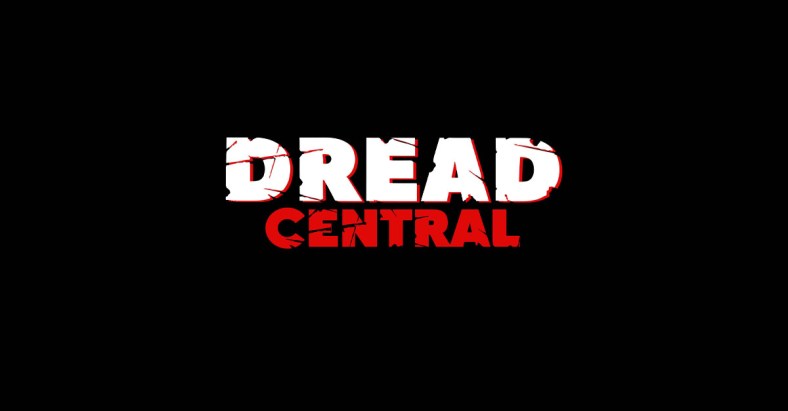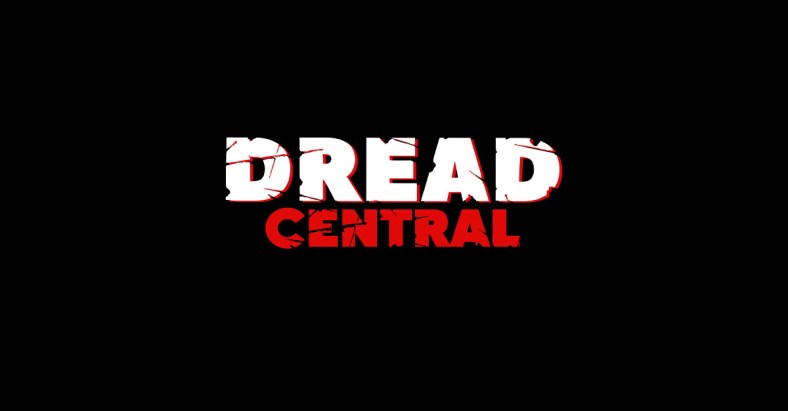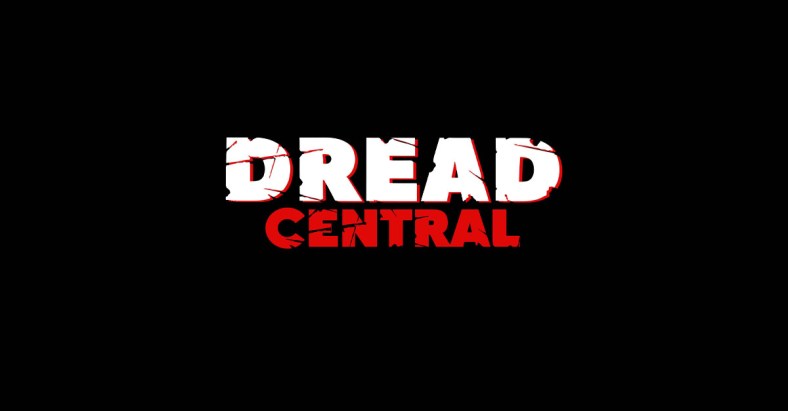Director Gary Sherman Walks Us Along The Death Line

 If you know the name Gary Sherman, then you’re definitely familiar with the man’s work over the years in the horror genre, especially with titles such as Dead & Buried and Poltergeist III under his worklist, but think way back to 1972 – anything ringing a bell? How about that well-known British shocker known as Death Line (Raw Meat for us here in the States).
If you know the name Gary Sherman, then you’re definitely familiar with the man’s work over the years in the horror genre, especially with titles such as Dead & Buried and Poltergeist III under his worklist, but think way back to 1972 – anything ringing a bell? How about that well-known British shocker known as Death Line (Raw Meat for us here in the States).
If you aren’t up to speed on this one – first of all, shame on you, and secondly, get ready to have your mind blown when the cannibalistic chiller gets the Blu-ray restoration treatment and becomes available for fans from Blue Underground on June 27th. Jammed with bonus features aplenty, this release promises to get the horror fanbase all lathered up in a bloody mess!
Mr. Sherman was gracious enough to spend a few minutes discussing the film and what he’s got coming up next, so settle in, read on and enjoy!
DC: How did you feel when you were approached with the news that your film would be restored after all this time?
GS: Well, it wasn’t like I was approached – I actually had a lot to do with it. We’ve been following getting back the rights to Death Line from day one, and the moment that MGM’s contract lapsed Jay Canter and I jumped in there to see exactly what the rights were going to be, and we then got together with Alexander Byrne – the grandson of the person who originally put up the money for the picture 45 years ago, and I knew that Bill Lustig was interested, so I called him to see if he’d like it, and his response was “like it? I’d love it!” He asked me where the original negative was because he wanted to scan the original, and I was into it, so I contacted William Fowler at the BFI, who is the head curator at the archives, and he was really excited telling me “Death Line is one of my favorite pictures!” So he started looking, and it was like a Dick Tracy detective novel – along the way we actually located the actual camera negative, which was in a vault at ITV, so we found all the original sound elements. The negative ended up going to Deluxe in London, and we tried a 4K scan, and it looked awful because the original was shot in 52/47, which is a very grainy stock as compared to today’s stock. So when you do a 4K scan of something like that, it was interpolating grain structure and it looked awful, so we went with a 2K scan and it was perfect – exactly like the original print. I own the original technicolor answer print, which the color is as perfect today as is it was 45 years ago, so we matched the two prints together, and in a couple of cases actually improved upon it. We basically created a DCP that rivals when this film actually premiered in London in 1972. When Bill and I sat down and watched the DCP I was blown away, and felt like I was transported back 45 years ago. We then remixed the sound, and we stayed away from stereo because it wasn’t made in stereo, and it shouldn’t be that way now, so we created a monaural mix that’s exactly the same, if not a little bit better than the original.
DC: Was this a brand new commentary that was recorded for the special features?
GS: Yes – I got together with my first assistant director (Lewis More O’Ferrall), and he was in London and I in Los Angeles with Paul Mazlansky in screening rooms that were hooked up together, and the three of us just had this wonderful conversation while the film was running, and it’s a really fun commentary.
DC: Take us back to 1972 – what inspired you to come up with the story of Death Line?
GS: My brain (laughs) – I had moved to London in 1968 following the convention in Chicago – I had to get out of here, as I was not going to live here with Richard Nixon as President, and my mother was British so it was an easy choice for me to go to England and get a green card. So I went there to do commercials and had quite a successful commercial career going for myself, and everyone was telling me to do a feature – then they were saying to write a script, and I knew John Daly at Hemdale and a few other people, and my producer who worked with me on commercials at the time was the same age as me, and his name was Johnathan Demme (laughs), and it was way before he ever thought about directing, and he sold me. Someone finally said to me “write a horror film” – and I’m a dyed in the wool researcher – I love to research stuff, and when I first researched The Tube in London I found out that it started off as a competition, and lots of people got killed – there really were cave-ins where they couldn’t get the bodies out, and this was all in my brain. I then read a story about Sawney Bean, who was a Scottish highwayman who became so notorious that the price on his head got so high that he couldn’t afford to be seen again, so in order to survive they began to start eating their victims. I found that to be interesting, so I decided to combine the stories and throw a little Donner pass in there and came up with the idea for the story. So when I was filming a Proctor & Gamble commercial, I wrote the script and gave it to Johnathan, and he really liked it. Johnathan then gave it to Paul Mazlansky, and it got passed to a few other people, and the decision was made to make the script.
DC: What was it like to work with names such as Donald Pleasence and Christopher Lee?
GS: It was scary (laughs) – I was this young twenty-something, who outside of my documentaries and music films had never done anything over sixty seconds, and here I am with Donald Pleasence, Norman Rossington, Christopher Lee, Clive Swift and all these amazing British actors, and it was nerve-wracking. When Ceri Jones and I wrote the script, we originally did it with Donald in mind, and at that time, he was the actor’s actor. He’d never done any kind of low-budget or horror film, and at the time he was doing “Man In The Glass Booth” on Broadway, and people had told me that he really wanted to do a comedy, and we had said that while Death Line wasn’t a comedy, the inspector Calhoun character definitely was comedic, and we’d had the idea with contrasting the idea of the comedy up above with the seriousness down below. So, he read the script and said that he’d always wanted to make a movie like this, and once we had Donald everyone else called us. Christopher Lee did it based on the promise that he wouldn’t have to wear fangs, and that he would have a one-on-one scene with Donald. Paul told Christopher that our whole budget is less than you make for a whole picture, and he told Paul that he was doing it for scale and to get to work with Donald. Norman Rossington’s agent then called and said that he wanted to play in the film with Donald as well, and it was the same with everyone else. Clive Swift had just done Frenzy with Alfred Hitchcock, and the entire process was unbelievable. Donald tested me the first day, and once I passed his test, then we all felt better.

DC: You’ve split a lot of time between film and TV, with horror as your main focal point – where do you see the direction of the genre heading, what do you see as the biggest thing it’s lacking at this stage?
GS: No, I think it’s better than it’s ever been – for one of the reasons why I left horror when I did was because as Rodney Dangerfield said, “It got no respect!” (laughs) I made Death Line, which is sort of heralded as a classic, then AIP (American International Pictures) took it and turned it into shit. They did an advertising campaign that had absolutely nothing to do with the movie, and renamed it Raw Meat, then cut the shit out of it. I said that if this is what they’re going to do to my films, then I don’t want to make movies.
DC: What was your initial reaction when you’d found out that the title had been changed?
GS: I hated it, and fortunately Robin Wood wrote an article that he called “Butchered” which was regarding the whole name change, and he said not to go see this movie – wait until you can actually see the original. Unfortunately it took close to 45 years before the American audience could see it – in Europe, the film’s been playing for years, and up until 2003 people could only get pirated copies of VHS, then with the inclusion of the internet it could be watched online, but they were shitty prints, but people were watching it. In 2003 MGM got the rights because they inherited the AIP library, and released a DVD, which was awful. It looked like a third-generation interpositive that they made a scan from, muddy as hell. Samuel Z. Arkoff, the head of AIP pictures, was in London and wanted me to come in for a meeting, and I absolutely hated it -hated the meeting, hated him, and they wanted me to come to L.A. to do more pictures for them and I told them “no thank you.”

DC: Lastly, what can fans look forward to seeing from you down the road – working on anything currently?
GS: Suddenly, with the re-emergence of Death Line, Blue Underground is starting to put together a restoration of Dead & Buried, because the last Blu-ray we did was from a scan about 10 years ago that was an internegative , and hopefully it will be done with Vice Squad. With all of that going on, there are some people who are talking to me about wanting me to make a comeback into the horror genre, and due to guys like Johnathan Blum, there’s a whole new respect for the horror genre that didn’t exist before, and I’m ready and willing to jump back into it. In the meantime I’ve been doing documentaries for the last 10 years, doing “The First 48: Missing Persons” on A&E – that lasted for 3 and a half years. I’m also involved in the filming of a documentary about the rehabilitation project that’s happening at Cook County Jail, where inmates are being taught the culinary arts – it’s called Recipe for Change and it’s to watch guys change…it’s incredible. We’re aiming at either a feature-length documentary or the possibility of it going to series on PBS. There’s also something that I can’t talk about yet (laughs), but there may be an announcement soon, and it has to do with television.
A special screening of Death Line will be happening on June 20th in NYC.

Categorized:News

